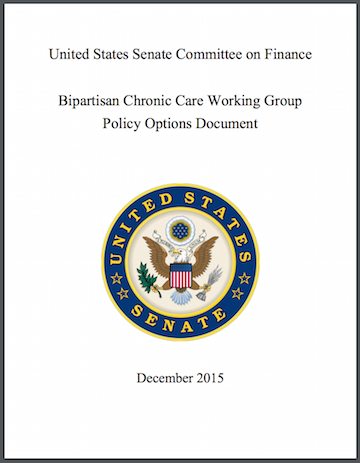
Issues related to the workforce and home- and community-based services should be included in quality measures developed to assess the care provided to Medicare beneficiaries with chronic conditions, the Eldercare Workforce Alliance told the Senate Finance Committee Bipartisan Chronic Care Working Group in a letter dated Jan. 29.
The remarks were made in response to policies the working group released in December that are designed to improve care for such beneficiaries. The EWA is a group of 31 organizations, among them LeadingAge and the Paraprofessional Healthcare Institute.
The biggest challenge facing Medicare, Ron Wyden (D-OR), Finance Committee ranking member, said at a Jan. 21 committee hearing, is “providing high-quality care to seniors who have chronic conditions like Alzheimer’s, cancer and diabetes. Our system today is not built to provide care for chronic conditions in a smart, coordinated way.”
The working group, announced in May and led by Sens. Johnny Isakson (R-GA) and Mark Warner (D-VA), recommends expanding and making permanent the Medicare Independence at Home demonstration project; expanding Medicare Advantage to include hospice care, end-stage renal disease care and other benefits; compensating clinicians who coordinate care; and waiving the beneficiary copayment associated with chronic care management. Additionally, the policy options document suggests identifying potential stroke candidates via telehealth and changing reimbursement for some telehealth providers.
Any efforts to expand access to home care should include steps to ensure a sufficiently sized supply of high-quality workers, the EWA told the committee.
The American Health Care Association and National Center for Assisted Living also submitted comments to the working group. Government plans, they said, must differentiate between older adults who are “functional elders” with one or two chronic diseases and the smaller number of older adults who are very ill and account for a high percentage of Medicare spending. “The very high-cost beneficiaries with multiple chronic conditions and dependence on others for care are a very different population,” the organizations said. Most models that have success in caring for the seriously ill address social needs as well as coordinate medical care, AHCA/NCAL added.
The organizations also expressed concern with linking payment to community-level quality measures over which providers might not have control.



